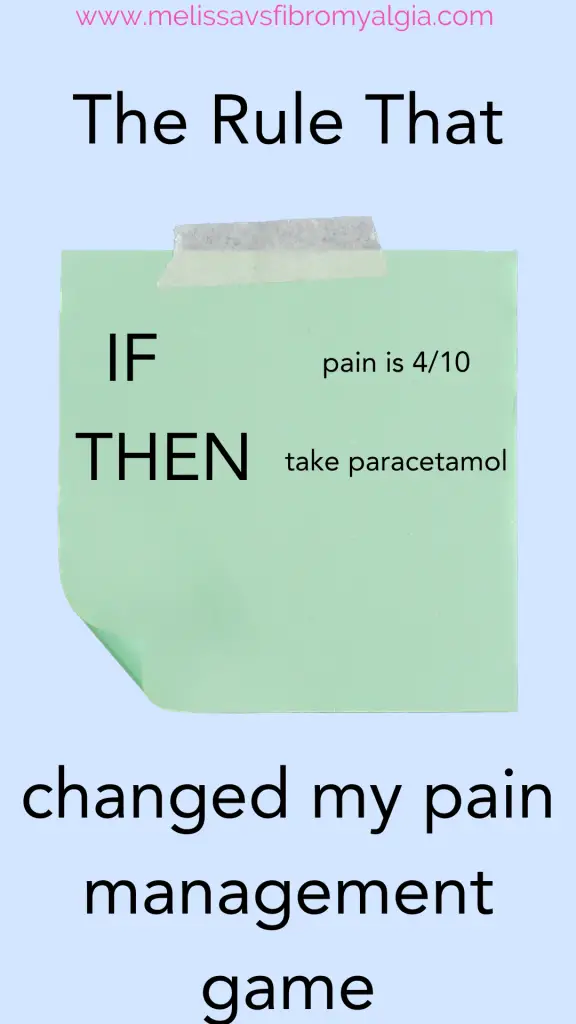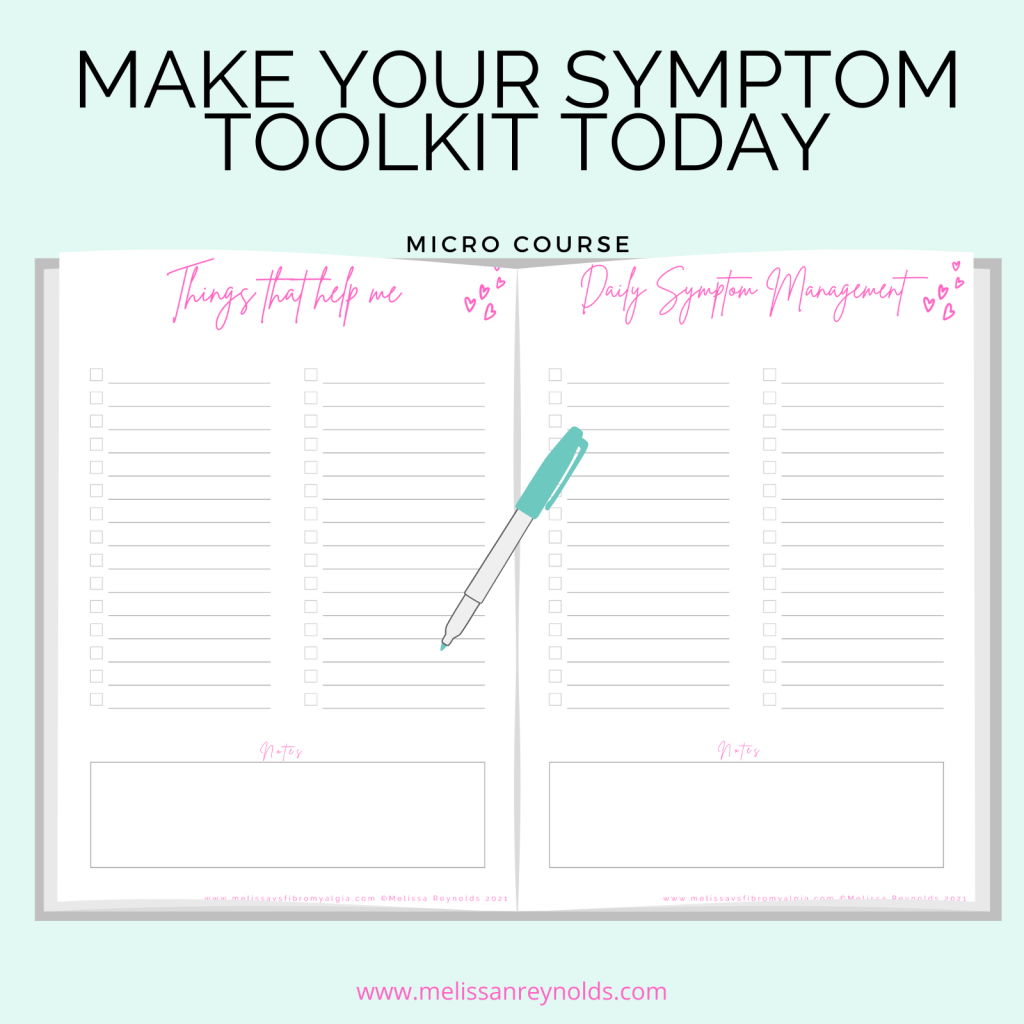Last Updated on November 4, 2023 by melissanreynolds
The trouble with living with pain for a long period of time that has often been ignored or outright gaslighting, is that one becomes better at enduring rather than treating it.

Since learning that pain increases the fight or flight response, both of which interrupt sleep, creating a vicious circle. I’ve been trying to create a virtuous circle.
Enter the “If This, Then That” rule for pain management.
Spoiler alert: This rule has helped me to reduce daily pain, flares and the amount of time I spend trying to manage the pain.
Watch the video here, or read on
I was discussing my neck with my physiotherapist one day, saying I felt like I have lost the line where I should be trying to treat the pain. She said that letting my pain get to a 5 out of 10 is like letting the train (my nervous system) leave without me. I’m running on the platform waving my arm, hoping it will stop. It generally will not.
Quick note: I offer this as a person with lived experienced for your own research. Please do your due diligence and work with your medical team. My work is not about diagnosing and treating you, it’s about sharing what I do, in case it supports your research. 🙂
So I created the following pain management rule:
If the pain is 4/10, then I will take paracetamol
If the pain is 5/10, then I will take ibuprofen (at this point, I’d usually have an accompanying headache)
If the pain is 6/10, then I will take the muscle relaxant
The context is important here. I have experienced pain for a long time, with very different types of pain. Myofascial pain, stubborn trigger points that produce many other effects, aching pain (when I’ve done too much exercise, it feels like flu aches), endometriosis pain (a whole other ballgame) and more.
Pain ratings are also relative and subjective. Prior to taking control of my healing journey, and improving to the point I have, I experienced pain levels of around 6-7/10 daily. With no good coping mechanisms. It was awful. However this long and winding journey has confused my sense of using the pain rating scales. The thing that matters, though, is that I am consistent.
So my 4 may not feel like your 4. But what matters is that I know the next level means the nervous system is going to turn into a runaway train and I want to shut that stuff down.
Another important point is that I do much more than just take pain medicine. I have a holistic management plan that involves calming the nervous system (meditation, breathwork and other relaxing practices), a thorough sleep routine, targeted stretches, self-trigger point work, unmedicated topical pain creams, heating pads and much more. It was at a point when I spent most of the day trying to diffuse the pain, with no luck, rather than just taking the pain medicine. It’s my area of weakness due to internalised biases.

I created Make Your Symptom Management Toolkit specifically to guide you through your symptom management plans including the If This Then That worksheet. Grab it here.
The “If This, Then That” rule circumvents it all
It helps me to continue my day with minimal disruption. If I notice the pain is getting up there, I follow the rules. It takes me a few minutes. We don’t want to be thinking about it all day. I check in with my symptom levels in the morning, after lunch and in the evening. This simple method of tracking my symptoms has helped me get to where I am on this journey.
It also helps me to stop the train leaving the station, more often than I’d hoped I could.
It’s really been a game changer for me.

If you can, try to allocate some time with your doctor and talk through the best way to take the medications they have prescribed into a rule like this. I have several medications sitting in my drawers, but doctors don’t tend to tell you how best to take it. I only learnt recently, from a pharmacist, that taking paracetamol consecutively helps its effectiveness. The same with ibuprofen. So I am not doing myself any favours, waiting until the train has left the station and then taking one dose of paracetamol and then wondering why I get laid flat with a massive flare.
In short, consider a “If This, Then That” rule for your pain management plan.
Make Your Symptom Management Toolkit specifically to guide you through your symptom management plans including the If This Then That worksheet. Grab it here.
